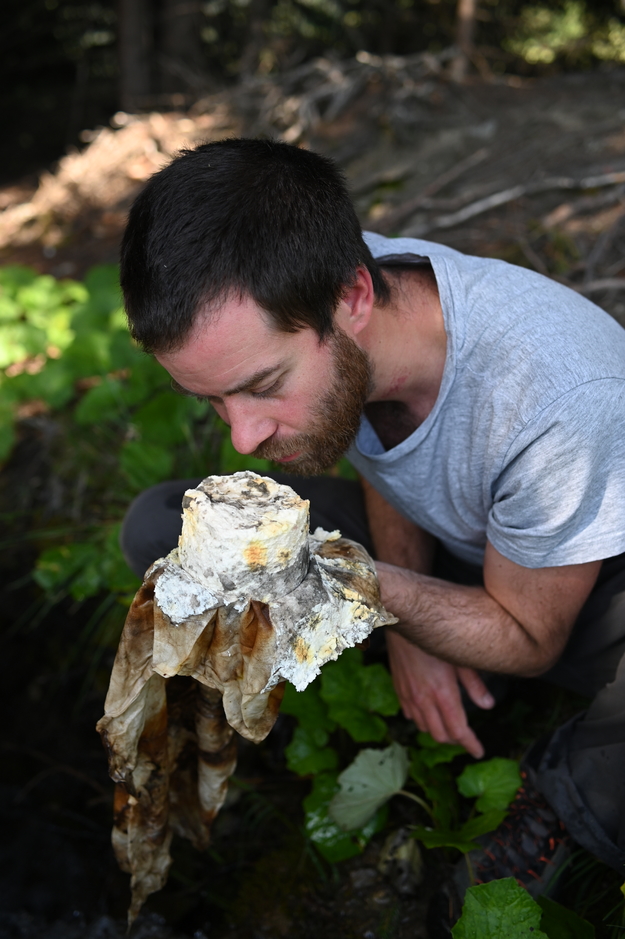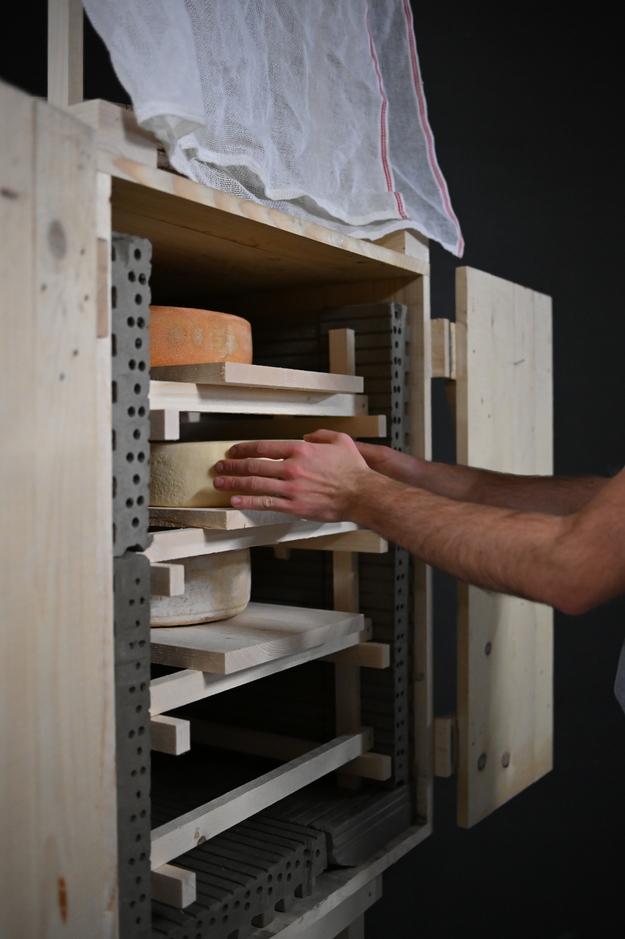In an interview with Philipp, he explained to me how the ‘Embodied Landscape’ is simultaneously a starting point for his residency, and a continuation of previous explorations. In working with multiple senses, and drawing on fields from anthropology to microbiology, he discussed this multidisciplinary approach;
“It's always borrowing, or trying to create symbiosis between me and other disciplines, but also between disciplines and more embodied practices. That's something that has always been a big part of my work; to link the science and the more rural practices of food preparation, or connections with the land. Considering the knowledge that is documented in a book or in an archive - compared to the knowledge that is given from hand to hand or from mouth to mouth - there is a really big gap. And so that's why I see myself as very privileged that I have the possibility to touch up on the academic and scientific fields, while at the same time be able to navigate and exist in the more embodied practices.”
Having graduated from the Design Academy in Eindhoven in 2017, Philipp has spent the past years training in Alpine dairy crafting, and embedding these rural practices into urban locales. I asked about his experience of shifting between different locations;
“On the one hand, for me personally, the possibility to be at many places educates your own senses. Like, it's also the work of becoming a perfumer, like becoming a nose; you have to smell as much as possible [...] In what I do, it's more or less the same. But for me, it's not just smelling but it's also seeing and touching and being with people from different backgrounds, and talking to those people.”
He discussed how he felt personally and professionally distanced from the context of his design education, so decided to leave the Netherlands and work as a herdsman in the Swiss Alps. It was here that he learnt to make cheese within a profoundly artisanal approach, yet recognised a strong cultural dissonance between this rural context and the progressive urban culture he had just moved from. Yet this gap was bridged, he explained, through the act of making.
“The moment where we could meet was the moment where we would practice the craft. It doesn't matter where you're from, which language you speak, the language is the smells you get, that's how you communicate with the animals, the way you communicate with your landscape. That's how you communicate with the foods you prepare. It just really it just changes you. And it changes your whole surroundings.”
It is this bridging, this synthesis of worlds which lies at the heart of Kolmann’s practice. He explained how his work looks to express a connection to our surroundings through smell and taste, and within those explorations bacteria and microbes play an important role in our connectivity with food and food culture. Kolmann’s recent work at Studio Makkink & Bey hinged on these embodied practices to explore the circular journey of making sourdough bread; from the soil to the crops and the process of fermentation into our own food sources. He ran a workshop centred around care-giving as a practice, sharing local microbes in the form of fermented foods. When I asked about his experience of working within these circular processes, he told me that his interest lies in the way there's no real start or end point in these cycles. By baking bread we can embrace curiosity - not just by mixing the ingredients, putting it in the oven and eating it - but by really observing the grains. He invites us to see the subtle differences between them, opening up a rich dialogue of past and present land use;
“I always love this idea of allowing a seed to carry knowledge. Because it has way more knowledge than all the books in this world could ever hold, or that we can comprehend. So I think [...] this idea of circularity is what I'm trying to transmit, it's the key to develop sensitivities for other species and for us, and our place within the ecosystems, or shared ecosystems.”
Talking further on the symbiosis between plant and humans, Philipp explained how bacterium living on seaweed on Japan has become part of the internal microbiome of some locals, whose communities have maintained this diet over many thousands of years. These bacteria, therefore, are more than part of the microbiological process; they are the “building bridges between plants and us, between soil and us and other species.” Our discussion surrounding seaweed brought us to the conversation of plant-based alternatives. I asked Philipp how he thought we could transfer knowledge from the rich dairy artisanal culture in which he has been so deeply immersed.
“It starts being interesting when we again talk about the microbiological processes, the fermentation processes involved in dairy culture that utilise bacteria and fungi alike in various ways. And I think that's where it's thanks to bacteria and fungi [...] that dairy is made digestible for us, and grains are made digestible for us. Again, you enter this collaboration with that species, and they help you to gain nutrients out of these foods. And then on the other side, you provide space for them to thrive.”
For Philipp, it is these fermentation processes which build the strongest bond between dairy and non-dairy produce. He looks to bacteria and fungi as a site of possibility; encouraging us to co-exist, to merge our environments, to embrace our interconnectedness. Kolmann’s work, while bridging worlds (between rural/urban, local/global, micro/macro, plants/humans) also invites us to marvel at the spaces and species in-between.
Philipp will be running creative consultations in January to discuss any artistic interests, concepts or projects. Go to Meet A Maker to book your slot!

